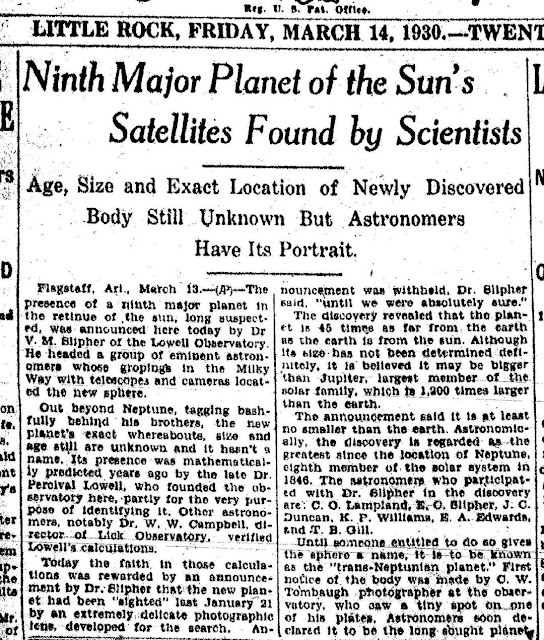On This Date In History
On February 18, 1885, Mark Twain publishes his famous, and famously controversial, novel The Adventures of Huckleberry Finn.
Twain (the pen name of Samuel Clemens) first introduced Huck Finn as the best friend of Tom Sawyer, hero of his tremendously successful novel The Adventures of Tom Sawyer (1876). Though Twain saw Huck’s story as a kind of sequel to his earlier book, the new novel was far more serious, focusing on the institution of slavery and other aspects of life in the antebellum South.
At the book’s heart is the journey of Huck and his friend Jim, a runaway enslaved person, down the Mississippi River on a raft. Jim runs away because he is about to be sold and separated from his wife and children, and Huck goes with him to help him get to Ohio and freedom. Huck narrates the story in his distinctive voice, offering colorful descriptions of the people and places they encounter along the way. The most striking part of the book is its satirical look at racism, religion and other social attitudes of the time. While Jim is strong, brave, generous and wise, many of the white characters are portrayed as violent, stupid or simply selfish, and the naive Huck ends up questioning the hypocritical, unjust nature of society in general.
Even in 1885, two decades after the Emancipation Proclamation and the end of the Civil War, The Adventures of Huckleberry Finn landed with a splash. A month after its publication, a Concord, Massachusetts, library banned the book, calling its subject matter “tawdry” and its narrative voice “coarse” and “ignorant.” Other libraries followed suit, beginning a controversy that continued long after Twain’s death in 1910. In the 1950s, the book came under fire from African American groups for being racist in its portrayal of Black characters, despite the fact that it was seen by many as a strong criticism of racism and slavery. As recently as 1998, an Arizona parent sued her school district, claiming that making Twain’s novel required high school reading made already existing racial tensions even worse.
Aside from its controversial nature and its continuing popularity with young readers, The Adventures of Huckleberry Finn has been hailed by many serious literary critics as a masterpiece. No less a judge than Ernest Hemingway famously declared that the book marked the beginning of American literature: “There was nothing before. There has been nothing as good since.”
On February 18, 1930, Pluto, (still the) 9th planet, (imho), is discovered at the Lowell Observatory in Flagstaff, Arizona, by astronomer Clyde W. Tombaugh.
The existence of an unknown ninth planet was first proposed by Percival Lowell, who theorized that wobbles in the orbits of Uranus and Neptune were caused by the gravitational pull of an unknown planetary body. Lowell calculated the approximate location of the hypothesized ninth planet and searched for more than a decade without success. However, in 1929, using the calculations of Lowell and W.H. Pickering as a guide, the search for Pluto was resumed at the Lowell Observatory in Arizona. On February 18, 1930, Tombaugh discovered the tiny, distant planet by use of a new astronomic technique of photographic plates combined with a blink microscope. His finding was confirmed by several other astronomers, and on March 13, 1930, the anniversary of Lowell’s birth and of William Herschel’s discovery of Uranus, the discovery of Pluto was publicly announced.
With a surface temperature estimated at approximately -360 Fahrenheit, Pluto was appropriately given the Roman name for the god of the underworld in Greek mythology. Pluto’s average distance from the sun is nearly four billion miles, and it takes approximately 248 years to complete one orbit. It also has the most elliptical and tilted orbit of any planet, and at its closest point to the sun it passes inside the orbit of Neptune, the eighth planet.
After its discovery, some astronomers questioned whether Pluto had sufficient mass to affect the orbits of Uranus and Neptune. In 1978, James Christy and Robert Harrington discovered Pluto’s only known moon, Charon, which was determined to have a diameter of 737 miles to Pluto’s 1,428 miles. Together, it was thought that Pluto and Charon formed a double-planet system, which was of ample enough mass to cause wobbles in Uranus’ and Neptune’s orbits. In August 2006, however, the International Astronomical Union announced that Pluto would no longer be considered a planet, due to new rules that said planets must “clear the neighborhood around its orbit.” Since Pluto’s oblong orbit overlaps that of Neptune, it was disqualified.
On February 18, 2001, Dale Earnhardt Sr., considered one of the greatest drivers in National Association for Stock Car Auto Racing (NASCAR) history, dies at the age of 49 in a last-lap crash at the 43rd Daytona 500 in Daytona Beach, Florida. Earnhardt was driving his famous black No. 3 Chevrolet and vying for third place when he collided with another car, then crashed into a wall. After being cut from his car, Earnhardt, whose tough, aggressive driving style earned him the nickname “The Intimidator,” was taken to a hospital, where he was pronounced dead of head injuries.
Earnhardt had been involved in another crash at the Daytona 500 in 1997, when his car flipped upside down on the backstretch. He managed to escape serious injury and went on to win Daytona in 1998, his first and only victory in that race after 20 years of trying. The 200-lap, 500-mile Daytona 500, which was first run in 1959 at the newly opened Daytona International Speedway, is one of NASCAR’s premiere events as well as its season opener.
Earnhardt, whose father was a race car driver, was born on April 29, 1951, in Kannapolis, North Carolina, and dropped out of high school to pursue his own racing career. He went on to become one of NASCAR’s most successful and respected competitors, winning 76 Winston Cup (now known as the Nascar Cup) races in his career and taking home a record seven Cup championships, a feat achieved by just two other drivers in his sport, Richard Petty and Jimmie Johnson. In addition to his legendary accomplishments as a driver, Earnhardt was also a successful businessman and NASCAR team owner. The 2001 Daytona race which cost Earnhardt his life was won by Michael Waltrip, who drove for Dale Earnhardt Inc. (DEI).
Dale Earnhardt Sr.’s death in 2001 made him the fourth NASCAR driver to die within a nine-month period and eventually prompted NASCAR officials to implement a series of more stringent safety regulations, including the use of head-and-neck restraints.
Dale Earnhardt Fatal Crash - Call by MRN
https://www.youtube.com/watch?v=JD8fFfqJkEU
















No comments:
Post a Comment